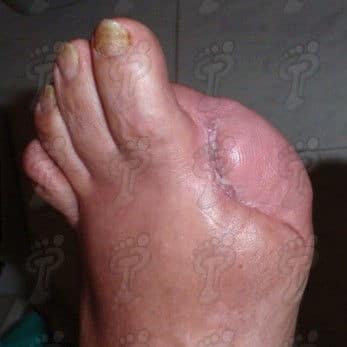
The amputations are the only possible treatment to an affection situation of a member with a null and void answer to other medicochirurgical treatments more conservative. The amputation has many causes such as for example, vascular diseases, infections, traumatisms and genetic malformations.
When the amputation is the only solution, it is important to assess very important parameters like the healthy cutaneous tissue, capacity of lever of the arm, a well blood irrigation, a painless blood irrigation, a scar in the right place and a main nerve section above the amputation. The amputation of toes is carried out in very specific pathologies and we try to keep the rest of toes provided they are not painful or very deformed. Amputations do not give important dynamic alterations with the exception of the first toe. The amputation of the first toe has as main consequences the metatarsophalangeal luxation of the second radius, distal lesions from second and third toe, excess weight of the rest of caput ossis metatarsalis, toes in a claw situation, sesamoiditis, a bad plantar perforans, etc.
The treatment of the first toe has usually its base on a plantar support. Meanwhile, in the rest of toes, we use silicone orthesis, in order to avoid some possible deformations of contiguous toes. The plantar support of the first amputated toe has to redistribute the body burden on the plantar surface. Thus, we will prepare a semirigid support that will avoid the morphologic alterations from the intern arch of foot and afterwards, we fill the amputated space with a viscoelastic material. he most frequent anterior foot amputations are the total phalangis resection and the metatarsal epiphyses. Some complications like the equinism, must be avoided. The rightest treatment will be the elaboration of a stabilizer plantar support bound to a prosthesis of an amputated anterior foot.
Another amputation is the standard supracondylar. In these cases, we make a personalized prosthesis of the dock adaptable to a prefabricated prosthesis of the extremity. We have to take account of these docks which usually have morphologic variations as time goes by. Generally, the main aims of prostheses are to protect the function from the extremity and to protect the rest from the member. We will talk more about it in detail in next issues.
